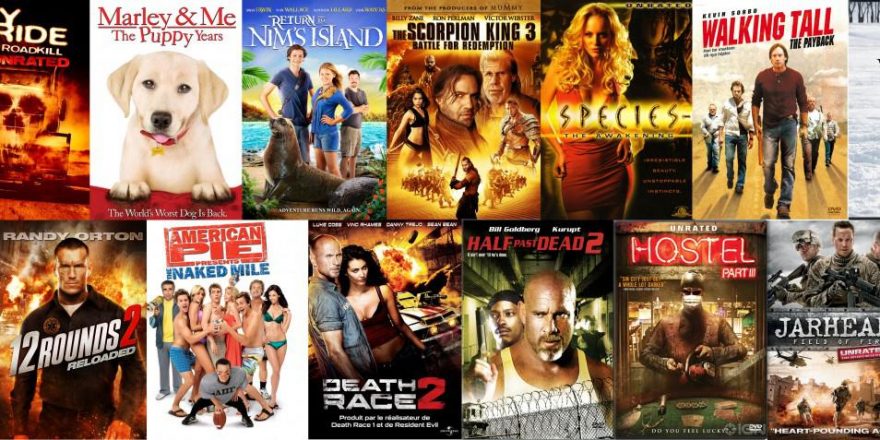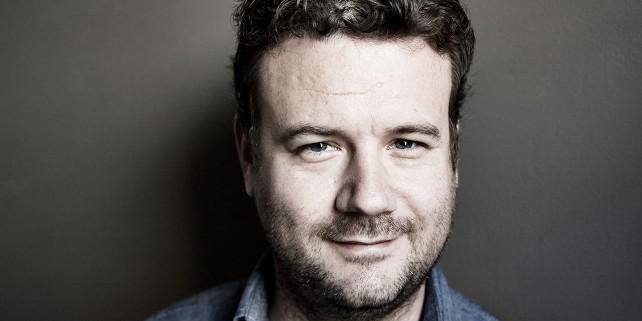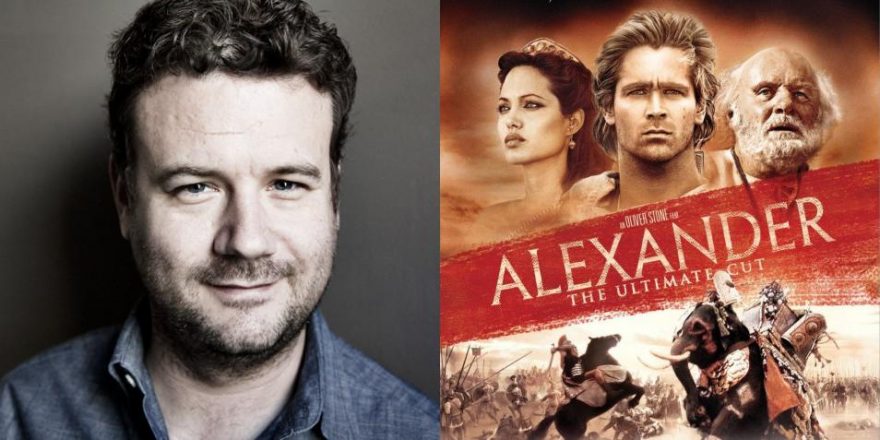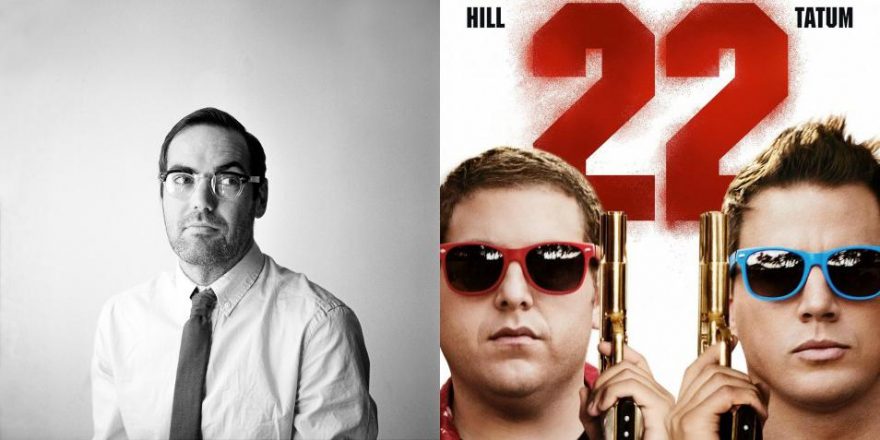A couple of weeks ago I picked up a copy of Steven Brill’s Walk of Shame from my local Redbox and was shocked to discover while watching the trailers that something called Jarhead 2 was coming out. Not to theaters, but straight to DVD and VOD, putting Jarhead in the company of films like American Pie, Wrong Turn, Road House, Baby Geniuses, Street Kings, Donnie Darko and other movies of wildly varying degrees of commercial and critical success that, for one reason or another, spawned home video sequels.
I must admit I’ve had a weakness for straight-to-DVD sequels ever since I first came across the majesty that was Alyssa Milano in Poison Ivy 2: Lily in 1996. During the era of brick-and-mortar video stores, I was a sucker for anything on the new-release shelf that had a 2 or 3 after the title but had completely bypassed my local multiplex. I can still remember the state of ecstasy that overtook me when I discovered that there were three Midnight Run sequels starring Christopher MacDonald in the De Niro role — though I think these may have originated as TV movies during Universal’s ill-advised “action pack” era, which also brought us four Smokey and the Bandit films starring Brian Bloom as Bandit. In any case, in the late 1990s and early 2000s there were very few straight-to-video sequels that failed to warrant my attention, though I never did get around to watching Half Past Dead 2 (perhaps in my retirement…).
I can’t really put my finger on why I was so obsessed with the likes of American Pie Presents: The Naked Mile and Bring it On Again, though I think it has something to do with the kind of shadow world they represented as studio movies operating both within the system and outside of it. Their budgets were (and are) considerably higher than what most of us lowly independent filmmakers have to make do with, but vastly lower than their theatrically released siblings, placing them in a weird netherworld that otherwise barely exists these days. They often have just enough money to offer the virtues of studio releases in terms of production value, but not so much that they face the same commercial pressures — a situation that has enabled some filmmakers to do surprisingly interesting and entertaining work. A quick internet search of any terms related to straight-to-DVD sequels yields mostly articles with titles like “10 Terrible Straight-to-DVD Sequels You Probably Missed” and “The 35 Worst Straight-to-DVD Sequels of the 2000s,” but these are more indicative of lazy writing on the part of snarky internet commentators than an honest appraisal of what the form has to offer.
Don’t get me wrong: most straight-to-DVD sequels are mediocre imitations of their namesakes, and you have to sift through a lot of crap to get to the gems — one of the reasons I stopped watching most of them somewhere around 2007. But it’s not fair to dismiss these movies out of hand simply because of the admittedly crass corporate instincts that enabled their production. In many cases, directors have done the same thing with straight-to-DVD sequel assignments that filmmakers like Jonathan Demme and Martin Scorsese did working on Roger Corman exploitation flicks in the 1970s, or that Tim Burton and Christopher Nolan did with their respective takes on the Batman franchise: they’ve found a way to bend preexisting formulas to their own ends, and managed to put their personal stamp on commercial assignments. There’s been a wide range of genuine auteurs behind the camera right from the start of the straight-to-DVD era. In 1989, one of the greatest living American directors, Two Lane Blacktop helmer Monte Hellman, was the unlikely voice behind Silent Night, Deadly Night 3: Better Watch Out! The underrated Steve Rash (The Buddy Holly Story) has in recent years directed someenergetic and highly entertaining entries in the American Pie and Bring it On franchises (not to mention Road Trip: Beer Pong!). One of the more interesting figures in the independent film movement of the 1980s and early 1990s, Kurt Voss (Border Radio, Sugar Town), brought an impressive degree of wit and style to the 1997 opus Poison Ivy: The New Seduction. And a few years ago Savage Steve Holland, the comic genius behind Better Off Dead and One Crazy Summer, infused Legally Blondes with a breezy charm.
While these are all cases of previously established directors working straight-to-DVD either for the creative freedom or because of difficulties getting their own projects off the ground, in recent years the world of straight-to-DVD sequels has given rise to a handful of its own auteurs. I don’t want to overstate my case here — there isn’t another Antonioni or Kurosawa hiding behind the camera of 12 Rounds 2: Reloaded or National Lampoon’s Christmas Vacation 2: Cousin Eddie’s Island Adventure — but I’m often blown away by what directors are able to do on these movies compared with their higher paid and better equipped counterparts. Declan O’Brien, for example, exhibits a real care in terms of composition and editing in Joyride 3: Road Kill and in his contributions to the Wrong Turn series. He tells his stories with a conciseness and clarity that the creators of bloated theatrical-release sequels like The Amazing Spider-Man 2 and X-Men: Days of Future Past could stand to emulate, and his use of light and color as expressive tools is positively invigorating at a time when so much of theatrical horror is gravitating toward the found-footage aesthetic.
The work of director Roel Reiné is even more noteworthy in this regard. His Death Race 3: Inferno, for example, is a smart, funny and gorgeous action spectacle with a hint of social satire that is superior not only to the movie that inspired it but to a hell of a lot of other, more widely acclaimed mainstream thrillers. At a time when the prevalent theatrical action-movie grammar seems to be a kind of Paul Greengrass-inspired dump-truck directing — jerky camerawork and quick cuts with no sense of space, clarity or precision —Reiné favors more classical virtues. His shots are carefully designed, both in and of themselves and in relation to each other, and this thoughtful visual construction results in action films that are exciting and invigorating rather than draining and exhausting. And their scale is positively amazing — I don’t know how Reiné gets his effects on the budgets that he has, but it never feels like he’s cutting corners. The Death Race films and his sequels to Behind Enemy Lines, The Scorpion King and The Marine all look better and bigger than most of the theatrical releases I see, and often generate more kinetic, visceral thrills.
Unfortunately, for all of Reiné and O’Brien’s strengths, they haven’t managed to fully elevate the straight-to-DVD sequel in the way that, say, John Sayles and Joe Dante turned the cheapo monster movie into art with Piranha, or Katt Shea subverted the erotic thriller and made a highly personal statement with Stripped to Kill. I’m still waiting for the truly great artist of the straight-to-DVD sequel to emerge — the filmmaker who does with the form what Budd Boetticher did in B-Westerns of the 1950s, or David Cronenberg did making low-budget Canadian tax-shelter horror movies in the 1970s. It’s highly possible that just such a person is out there and I simply haven’t discovered him or her yet, since these days there just aren’t the hours in the day for me to keep up with the likes of The Little Rascals Save the Day and Marley & Me: The Puppy Years. If you know of such a director, let me know in the comments section. Because given the fact that all of these sequels are in essence pre-sold, I imagine there’d be a way to do really interesting things not only technically and visually but also in terms of content. Something called The Marine 4 is probably going to sell the same number of copies no matter what’s inside the box, so why not take the opportunity to use genre to indulge your own preoccupations in the way that John Carpenter did with Halloween, or Clint Eastwood did with Sudden Impact, or Walter Hill did with just about every movie he ever made?
For all of the well deserved hatred aimed at sequels, there is an honorable tradition in American film of using sequels as vehicles by which to smuggle subversive ideas or formal innovations into the mainstream: it’s the tradition of John Boorman’s Exorcist II: The Heretic, B.W.L. Norton’s More American Graffiti and Joe Dante’s Gremlins 2: The New Batch (not to mention the aforementioned Sudden Impact). These movies all took advantage of the relative safety provided by their pre-sold status to do truly revolutionary things and even comment on and critique their predecessors. Granted, these films took this approach so far that in some cases they got a lot of heat for departing from their formulas, but there’s a middle ground, too — the area occupied by Aliens, Terminator 2: Judgment Day, and more recently The Purge 2: Anarchy. These films deepened and developed the ideas of the originals without abandoning their overall tones, making them in some ways perfect sequels. I’m not sure if their heights can be achieved in the world of straight-to-DVD, partly because I’m not even sure how these sequels get green-lit or are decided upon — one of the most fascinating things about the business is the fact that movies that weren’t even that successful on their initial release, like Wrong Turn and Jarhead, seem as desirable as starting points for franchises as hits like American Pie and Bring it On. But if anyone from 20th Century-Fox Home Entertainment is reading this, give me a call — I’ve got a hell of an idea for The Girl Next Door 2.







